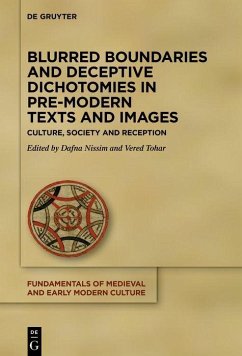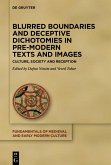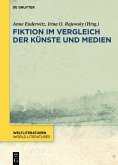This collection of essays focuses on the way blurred boundaries are represented in pre-modern texts and visual art and how they were received and perceived by their audiences: readers, listeners, and viewers. According to the current understanding that opposing cognitive categories that are so common in modern thinking do not apply to pre-modern mentalities, we argue that individuals in medieval and pre-modern societies did not necessarily consider sacred and secular, male and female, real and fictional, and opposing emotions as absolute dichotomies. The contributors to the present collection examine a wide range of cultural artifacts - literary texts, wall paintings, sculptures, jewelry, manuscript illustrations, and various objects as to what they reflect regarding the dominant perceptual system - the network of beliefs, worldviews, presumptions, values, and norms of viewing/reading/hearing different from modern epistemology strongly predicated on the binary nature of things and people. The essays suggest that analyzing pre-modern cultural works of art or literature in light of reception theory can lead to a better understanding of how those cultural products influenced individuals and impacted their thoughts and actions.
Dafna Nissim, Ben-Gurion Universität Negev, Beer Sheva, Israel; Vered Tohar, Bar-Ilan Universität, Ramat Gan, Israel.
Dafna Nissim, Ben-Gurion Universität Negev, Beer Sheva, Israel; Vered Tohar, Bar-Ilan Universität, Ramat Gan, Israel.
Dieser Download kann aus rechtlichen Gründen nur mit Rechnungsadresse in A, B, BG, CY, CZ, D, DK, EW, E, FIN, F, GR, HR, H, IRL, I, LT, L, LR, M, NL, PL, P, R, S, SLO, SK ausgeliefert werden.









